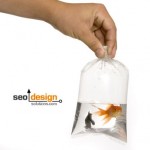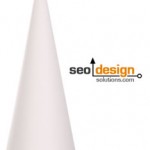Have you ever wondered how link discovery time affects your pages SERP (search engine result page) position and SEO? In a previous post named SEO and the Cycles of Optimization, I made an allusion to link discovery time and link transference. Both metrics determine the internal or external links ranking factor passing value through the respective release of transference and trust to the target page.

How does (internal or external) link discovery affect SEO?
Just how are links factored into the ranking equation in contingency to relevance, term frequency and a pages respective SEO score? One metric is the deep crawl rate of a site which hinges on link discovery time and SERP (search engine result page) positioning. Typically, as relevance and volume increase in one metric, it increases proportionately in the other.
Only search engines can be sure, yet, depending on which version of the index you are viewing (and yes, there are more than one index used for scoring relevance) you will see different pages peaking, relapsing or becoming more prominent in search engine rankings based on link metrics and their respective oscillation.
Managing the cycles (for both internal and external) link distribution is crucial for letting search engines know which pages deserve more emphasis. Often (as a result of duplicate content) pages will fight amongst themselves since templates exist or if each page is not 70% unique from others.
This means that in order to distinguish a page, you should implement the use of off page ranking factor via deep links to differentiate that page from others. By linking specifically to a certain page from others (of activate the relevant shingles so to speak).
One thing that is certain however, is, links still count as a primary ranking factor. For all intensive SEO purposes, their respective cache/trust delay for passing ranking factor should also be taken into account.
Let’s look at the metrics for further insight…
SEO depends on cache discovery time, which is a direct measure of importance of a document in relationship to a body of documents. Document discovery time can also be viewed in light of authority. If search engines deem your content worthy and algorithmically beneficial, then your website will have a fast crawl rate and get spidered and indexed quickly.
By creating more pages, your website essentially gains more page rank. More page rank (and not just what Google displays) equates to acquiring a higher degree of domain trust; and that search engine trust in turn releases itself through providing the bridge between keyword thresholds and queries.
Trust also translates into your site ranking across a higher threshold of competitive keywords with less effort. Since 80% of most traffic is from the long-tail of search and keywords stemming (like branches from a tree). This process can bring new life and fresh visitors to your website to foster conversion.
The more pages you have in your website that are specifically targeted for a series of keywords that have co-occurrence, the page with the most relevant concentration becomes the fulcrum and serves as a release point where authority and relevance overlap.
In other words remote pages rise to the top when any two or more keywords contained on the page are executed in a search query. The premise is clear, why target one keyword when you can target hundreds simultaneously?
This can be viewed like a point when page rank spills over from one page to the next and moves about oscillating throughout the body of documents through the sub folders and the entire website. This process should be welcomed and embraced; it is after all the predecessor to favorable rankings. As page rank moves around your website (which it will), you will see spikes in new keywords making their way to the fore front of your analytics.
In plain English, if you have 400 pages which mention the word “targeting” for example, those occurrences on the pages have a high proximity to the word “keyword” for instance, the that collection of documents when parsed directly relates to your websites ability to rank for the phase “targeted keywords” or “best keywords” granted if the word “best” also has enough term weight throughout the site.
To summarize, the link discovery time from other sites to your pages as well as your own websites internal linking process invariably have an impact on relevance and which keywords or key phrases are dominant throughout your website.
The key is, being able to shift, defend of enhance preferred rankings through proper planning in advance to augment competitive keywords or acquire positioning for less competitive keywords.
One way to augment the trust cycle of links (which ranges from 1-4 months) is to apply a drip down approach where your link velocity is systemically increased over time or moderated by internal links.
The more internal links you create, the less dependent you become on external links. For example, you could either factor (a) a 3-5 link per day link building exercise to augment your preferred landing pages, or (b) fire up a series of RSS feeds to build traffic and back links to your nested pages via deep links.
In either case, the effect of layering the links with content and relevance are a winning combination for producing intentional top rankings in addition to long-tail / unintentional traffic. This will also augment your internal pages from going supplemental from the “more of the same” duplicate hum drum syndrome most websites suffer from as a result of not cultivating each page as a true SEO resource.









Thanks for the article …
A program to build link is a very small part of Search Engine Optimization and search engine optimization is only a fraction of what’s involved in building a successful online business.
Keyword body refers to the bulk of the keywords independent aural your argument about to the bulk of argument there is